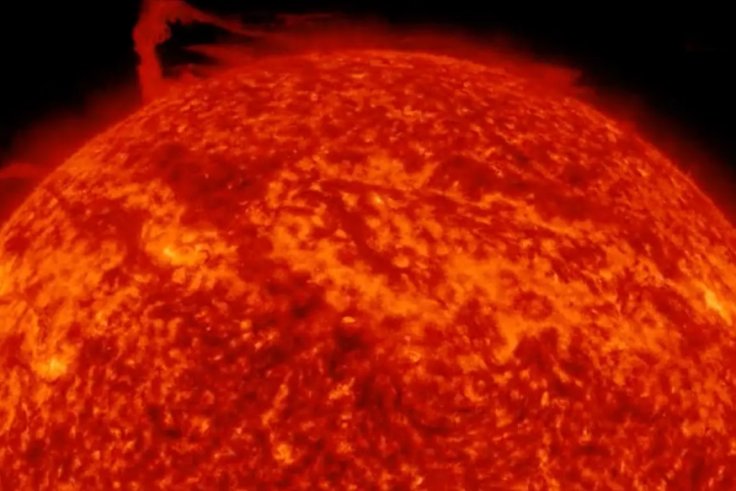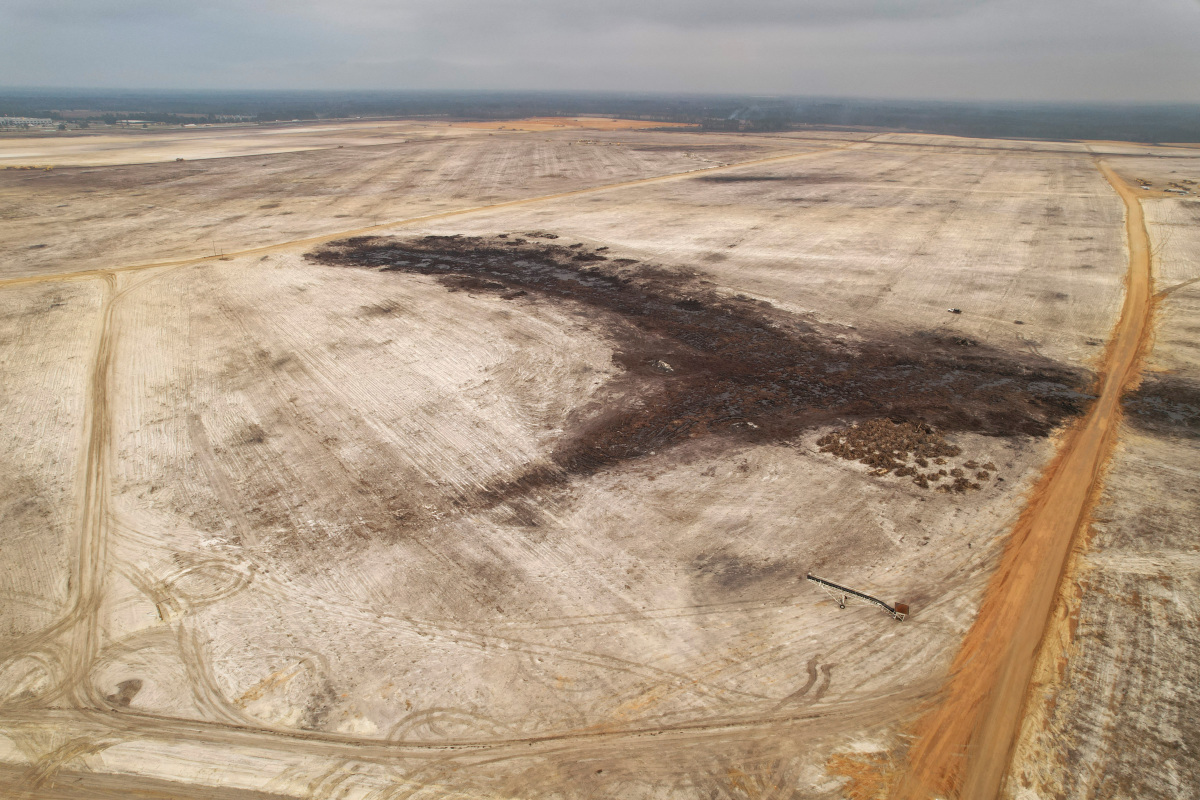The sun has always fascinated astronomers. However, they have now been left stunned after a huge part of the Sun broke off of its surface and created a tornado-like swirl around its North Pole. The remarkable phenomenon was caught by NASA on the James Webb Space Telescope and tweeted by Dr. Tamitha Skov, a space weather forecaster.
While scientists are perplexed, they believe the prominence is related to the reversal of the sun’s magnetic field, which occurs once every solar cycle. However, they are yet to arrive at a conclusion and are still trying to find out what exactly caused the portion to break off from the ball of fire.
Stunning Video Baffles Scientists
Skov was the first to upload the stunning video on Twitter, stating that it was captured by NASA’s Solar Dynamics Observatory. “Talk about the polar vortex! Material from a northern prominence just broke away from the main filament & is now circulating in a massive polar vortex around the north pole of our star,” tweeted Skov.
“Implications for understanding the Sun’s atmospheric dynamics above 55° here cannot be overstated!” Skov added.
According to experts, unusual activity generally occurs near the sun’s 55-degree latitudes once in its every 11-year solar cycle, but this episode has scientists baffled.
According to NASA, the prominence is a large bright feature extending outward from the Sun’s surface. There have been several such instances in the past but this one has stumped the scientific community.
“More observations of the #SolarPolarVortex reveal it took roughly 8 hours for material to circumnavigate the pole at approximately 60 degree latitude. This means an upper bound in the estimation of horizontal wind speed in this event is 96 kilometers per second or 60 miles a second!” Dr Skov said in a subsequent tweet.
Unnatural But Not Impossible
According to Scott McIntosh, a solar physicist and the deputy director of the National Center for Atmospheric Research in Colorado, no one knows what triggers such an unusual event.

“Once every solar cycle, it forms at the 55-degree latitude and it starts to march up to the solar poles,” McIntosh said. “It’s very curious. There is a big ‘why’ question around it. Why does it only move toward the pole one time and then disappear and then come back, magically, three or four years later in exactly the same region?”
Experts and scientists acknowledge that the entire episode presumably has something to do with the magnetic field of the sun, but the rest is still unknown owing to humanity’s limited understanding of its star. Scientists observe the sun Only from the “ecliptic plane,” or the geometric plane containing Earth’s orbit.
Answers may come from the European Space Agency’s Solar Orbiter project, which is photographing the sun while raising its orbit above the ecliptic plane, but for now, scientists are still in the dark.
Experts have frequently seen solar forecasts, such as the solar flares that threatened to hit Earth last year. Although there is no way to accurately predict how this solar vortex would influence our globe, academics at the time cautioned that such projections could interfere with GPS systems, electricity grids, and even radio communications.
According to Space.com, the sun has already produced several “strong” flares this month that have interfered with communication on Earth, although otherwise seeming innocuous. The sun will peak in activity in 2025, the eleventh year of the current cycle.

![Huge Piece of Sun Breaks Off and Swirls Around Its North Pole, Leaving Scientists Baffled [WATCH]](https://data.ibtimes.sg/en/full/65315/sun.jpg)





